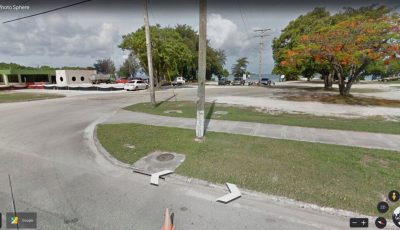DLNR, BECQ support fees for Grotto
Two government agencies support the idea of imposing fees on those who visit the Grotto, both as a means of controlling the number of people who go there and to protect the popular dive site.
Both the Department of Lands and Natural Resources and the Bureau of Environmental and Coastal Quality have come forward to back the idea of imposing fees on Grotto visitors.
DLNR Secretary Richard Seman and BECQ administrator Frank Rabauliman agree that controlling the number of people who visit the Grotto can benefit the site in terms of sanitation and maintenance.
Talks of a fee being charged tourists and other non-local visitors is being discussed among various government agencies such as the Marianas Visitors Authority, BECQ, DLNR, and the Department of Public Lands.
Seman believes the fee could be used to maintain the Grotto.
“We need to find ways to provide us the finance to help maintain the facility. Right now, we have to scrounge up [money] and yet all these tourists are impacting the Grotto. If we start assessing fees, only the real, serious tourists will be going there [to visit],” said Seman.
Rabauliman backs the idea of controlling the number of visitors to the site.
“I support placing some sort of control on the number of visitors that go to the Grotto, primarily for the health and safety of the visitors,” said Rabauliman.
“It is a precarious trek down those flight of stairs, and the risk of injury is compounded when traffic is congested with SCUBA equipment in tow,” he added.
Seman said that DLNR has already been planning to develop something to control the amount of visitors to the site.
“[DLNR needs to clarify] whether the deed of that land as a conservation area does not violate the Constitution. PL 12-41, the law that set up that area as a conservation area, provides [DLNR] the authority to charge fees to maintain the facility,” said Seman.
Seman said DLNR has to obtain a legal finding based on whether the fees collected for the Grotto would go to DLNR.
“We just want to make sure that when we do assess a fee, that the fee goes to us for the maintenance of the facility, instead of going to [somebody else],” said Seman.
The fee could help the Grotto but it is also a double-edged sword.
“What if somebody slips? What if somebody falls? The difference between assessing a fee to visit the Grotto and keeping the Grotto free is that the liability kicks in,” Seman said.
“We can ask for a dollar just to go down, $3 additional for jumping into the water and another $5 for scuba diving. There are different ways to look at it based on the impact [of visitors]. We’ve got to protect that place and sometimes there are just too many people,” he added.
“What appears to be okay, over time, could cause severe damage,” said Seman.
In an earlier interview, MVA managing director Chris Concepcion said that having controlled visits at the Grotto arose after BECQ found increasing amounts of contaminants at the site.
“We all agreed that something must be done to prevent or limit the damage as much as possible,” he said. “I think we all can agree that the Grotto is precious and peculiar and must be shielded and safeguarded for future generations to enjoy.”



























